The dragging sound can be a nerve-wracking experience when you’re driving along, and suddenly you hear it coming from your car. So, why your car sounds like something is dragging, but nothing is there?
A worn drive belt, a dragging brake caliper, a bent CV joint, or a loose wheel bearing can cause a dragging sound. It is best to get the car inspected by a certified mechanic to determine the exact cause of the sound.
In this blog post, we’ll explore the possible causes of this issue and look at the steps you can take to diagnose and fix it.
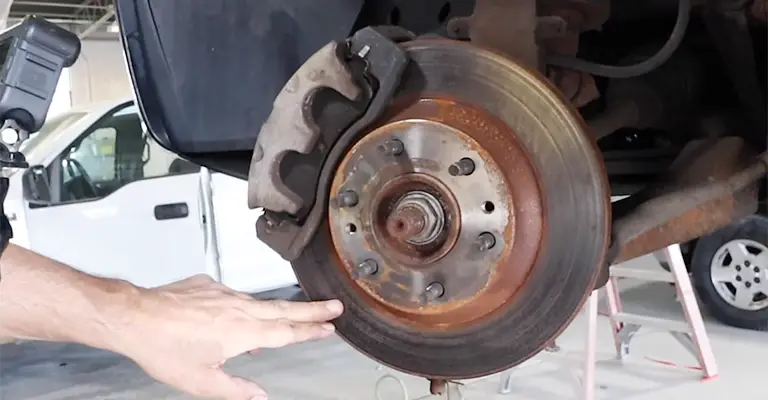
Common Causes of the Dragging Sound
There could be many reasons your car is making a dragging sound, some of which may be something you can fix yourself and others that may require a professional’s help.
If your car is making a dragging sound, it’s crucial to figure out the cause as soon as possible, as ignoring it may lead to further damage and unexpected expenses.
Here are the most common causes of a dragging sound from your car:
Brake Pads and Caliper
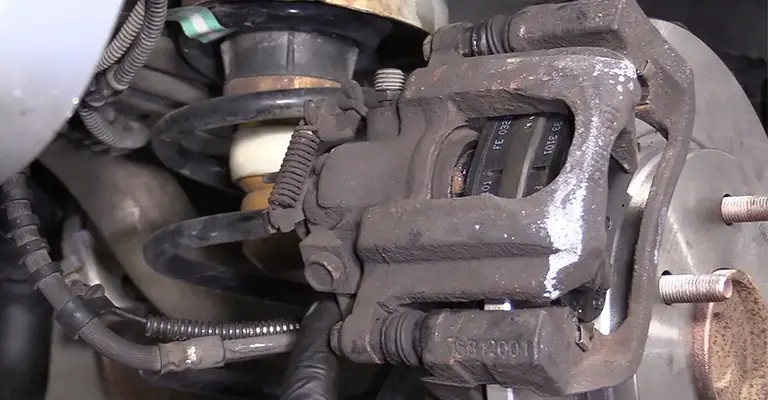
Your car’s brake pads can wear down over time, and if the pads become too thin, they can cause a dragging sound when braking, especially when turning corners. Left untreated, this can cause severe damage to the rotors and other components.
If the brake caliper becomes stuck in the collapsed position, it can prevent the wheel from turning freely, causing it to drag along the ground and produce a loud scraping sound.
Wheel Hub Assembly
The wheel hub assembly can become loose and cause a dragging sound, especially when driving over different surfaces. Keeping the wheel hub assembly tight is essential to avoid any potential damage.
Sway Bars
Sway bars, sometimes called anti-roll bars, are designed to reduce vehicle body roll and improve handling. If they become too worn, they can start to drag and cause a loud scraping sound.
U-Joints
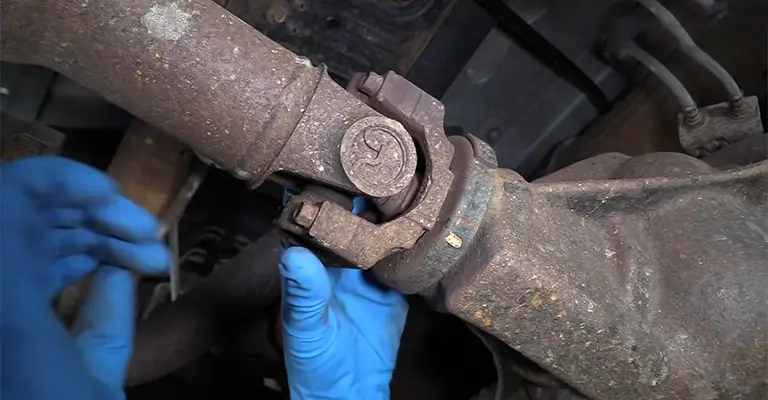
U-joints connect your car’s drive shaft and transmission and, as such, are essential for smooth operation. If your U-joints connections are loose or worn out, then they may be causing your car to make that dragging sound.
Drive Shaft
The drive shaft is damaged by hitting a large object like a rock or a chunk of concrete.
If the drive shaft is bent, it can scrape against your car’s underbody, resulting in the drag sound you’re hearing.
Mud Flaps
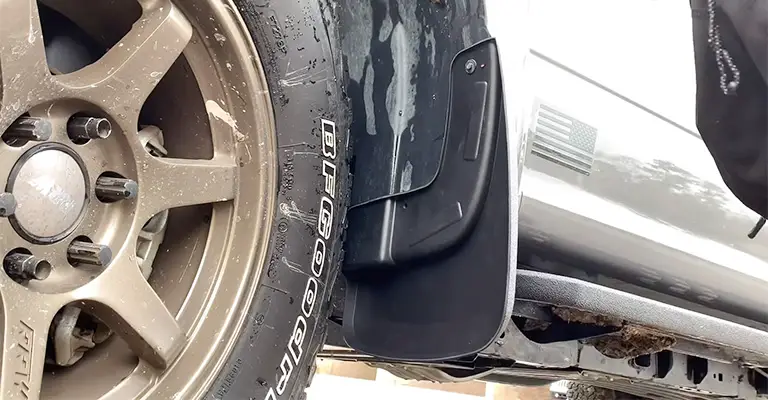
Mud flaps, also known as splash guards, are designed to keep dirt, mud, and stones away from your car’s wheel wells. When they break or get damaged, they can hang loosely and cause a dragging sound when driving.
Exhaust
Your car’s exhaust system can become loose, causing the muffler or exhaust pipe to drag along the road’s surface. This can also damage the exhaust system and make a nasty sound when driving.
Shock Absorbers
The shock absorbers dampen the vibrations of your car’s suspension, helping you to drive over off-road tracks and rough roads. If the shock absorbers are damaged, they can cause a scraping sound when the car is driven over bumps.
Low Fluid
The transmission and other parts of the car require fluid to keep running smoothly. Any fluids running low can cause a dragging sound when driving.
Jack Points
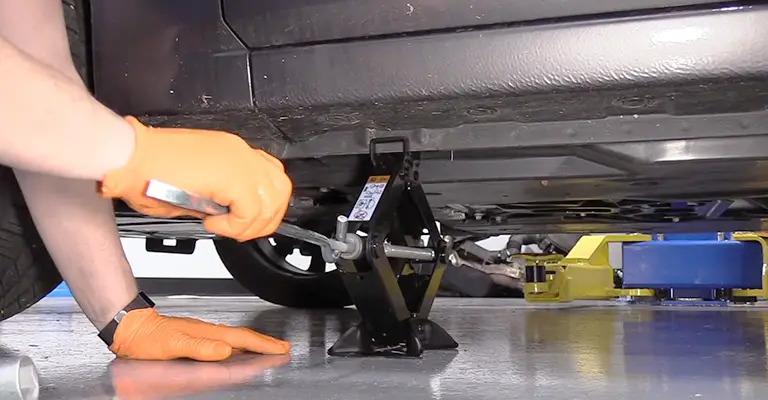
The jack point is the part of the car where you insert the jack to lift the vehicle in an emergency. If the jack point isn’t secure, it can drag on the ground, causing a loud grinding sound.
How to Diagnose the Dragging Sound?
While any mechanical issue can be challenging to diagnose, there are several steps you can take to try and pinpoint the problem.
Step 1: Inspect the Undercarriage
Troubleshooting a dragging sound in your car is to inspect the undercarriage. Look to see if there are any obvious signs of damage, such as loose or broken parts or wear and tear, or rust.
If you see any signs of damage, bring your car to your local mechanic for further inspection and repair.
Step 2: Listen for the Sound
Listen for the sound and try to pinpoint where it is coming from. The most common location for the dragging sound is the muffler, so start by listening around that area.
If the sound comes from the muffler, it could signify many issues, such as exhaust leaks, loose hangers, or a damaged muffler.
Step 3: Identify the Issue
Once you have identified the location of the sound, you can start to rule out different potential causes. Start by inspecting your exhaust system to see if there are any broken or clogged parts.
It’s also a good idea to check the spark plugs for the correct firing order, as this can cause a dragging sound. If all of these parts look in order, consider other possible sources, such as the alternator or air filter.
Step 4: Troubleshoot Further
If the sound doesn’t appear to be coming from the muffler, alternator, or air filter, you may need to consider additional troubleshooting measures.
For example, lifting your car and running it while on a hoist can help you to locate the sound more accurately. Another option is to take your vehicle to a professional mechanic who can perform a series of tests to further diagnose the issue.
Regular Maintenance of a Car: What to Do?
Sometimes it’s easy to forget just how important it is to keep up with regular maintenance for your vehicle. Routine maintenance and repair can help keep you safe on the roads and the life of your car, truck, or SUV.
There are some crucial points to remember when it comes to regular maintenance, including checking your tire tread and alignment, cleaning and lubricating, and examining your braking system.
Check Tire Tread and Alignment
Properly inflated tires with a good amount of tread are crucial to road safety.
If your tires are low on the tread or the alignment of the wheels is off, it can cause uneven wear on your tires, which can eventually lead to issues, including less traction.
This can make it difficult for your vehicle to grip the road and make it more likely for a tire blowout.
Remember to monitor the pressure in your tires, do regular tire rotations, and keep up with an alignment to ensure your tires’ best and most efficient performance.
Regular Clean and Lubricate
Cleaning and lubricating are often overlooked, but they are essential for the longevity of your vehicle.
Regularly cleaning the critical components, such as the battery terminals, engine, transmission, and driveshaft can help to prevent rust or grime from causing damage to the overall condition of your vehicle.
Make sure all the components are properly lubricated and functioning, as they should extend the life of your vehicle and make it run more efficiently.
Check Braking System
This is an integral part of regular maintenance. Checking your brake pads and lines can help ensure they are functioning correctly and not worn down or degraded.
Additionally, ensuring there is no leaking fluid can help avoid issues with having a low or empty brake fluid tank, as that can cause your brakes to malfunction.
FAQs
Can You Drive While Your Brakes Drag?
No, you cannot drive with a faulty brake caliper. If you keep pushing the vehicle, you risk further damage to your braking system and other parts. That’s bad for your car and bad for you and other drivers on the road.
Cost to Repair Dragging Brakes?
If you need to replace something on all four wheels, you should budget between $35-$150. The labor cost varies but is usually between $80-$120 per axle, bringing the total cost of an axle to between $115-$270.
How Loud Is a Failing Transmission?
Transmission trouble is a cause of any noises that resemble clicking, buzzing, or even dragging. Manual transmissions make louder “dragging” noises, while automatic ones may clunk, buzz, or whine if they’re in poor condition.
Final Thoughts
It’s essential to regularly maintain and service your car to ensure optimal noise prevention.
If you hear a car that sounds like something is dragging, but nothing is there, investigate and take appropriate action to address the issue before it causes more severe damage.
This may involve inspecting the belts, brakes, tires, and other car parts that are dragging and producing the noise. Looking over your car and addressing any issues can help prevent and reduce your vehicle’s noise.
Leave a Reply